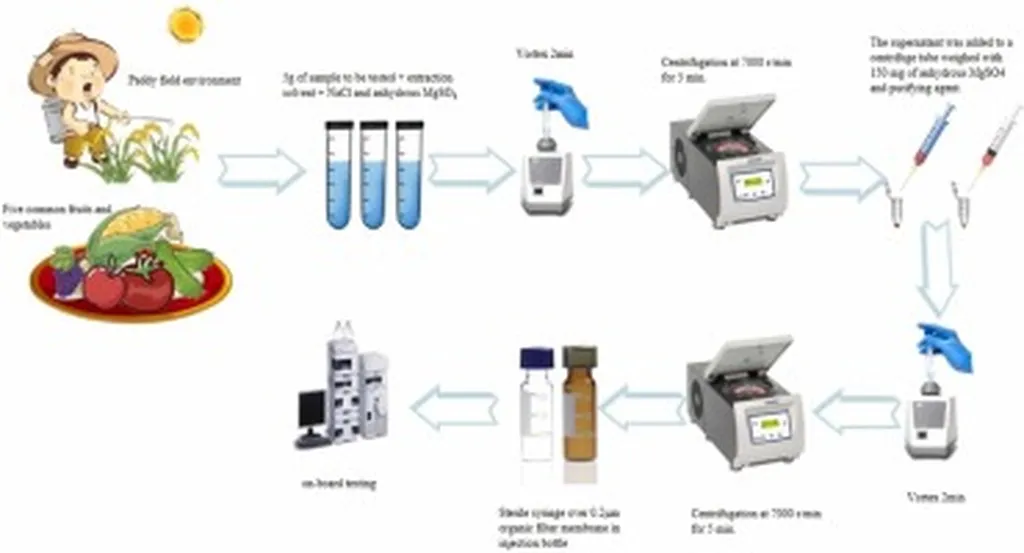In the heart of Jiangxi Agricultural University, a team of researchers led by Shuanggen Huang has been delving into the complex world of pesticide detection, aiming to mitigate the environmental impact of agricultural practices. Their recent study, published in the journal *Agronomy* (translated from Chinese as “Field Cultivation and Crop Science”), focuses on the dielectric properties of paddy water, offering a novel approach to identifying and quantifying pesticide residues.
The dramatic increase in pesticide usage has led to significant environmental contamination, with unused pesticides often finding their way into paddy water. Traditional methods of detecting these chemicals can be time-consuming and labor-intensive. Huang and his team sought to develop a rapid, efficient alternative. “We wanted to find a way to quickly and accurately identify different types of pesticides and predict their concentrations in paddy water,” Huang explains.
The researchers collected amplitude and phase frequency response data from 15 types of paddy water samples, including four typical pesticides: chlorpyrifos, isoprothiolane, imidacloprid, and carbendazim. They analyzed these samples at 10 different temperatures, using principal component analysis (PCA) and competitive adaptive reweighted sampling (CARS) to extract characteristic frequencies.
Using support vector machine (SVM) models, the team established a species identification system based on the amplitude and phase frequency response data. The results were promising, with identification accuracy exceeding 90%. The PCA-SVM model, in particular, demonstrated exceptional performance, achieving a prediction recognition accuracy range of 97.5–100% for typical pesticides in paddy water.
The study also developed an artificial neural network (ANN) content prediction model, which showed strong predictive capabilities. The highest R² prediction values for the four pesticides were impressive, with imidacloprid reaching 0.9113.
The implications of this research are significant for the agricultural and environmental sectors. By providing a rapid and accurate method for detecting pesticide residues, this study offers a valuable tool for monitoring and managing pesticide use. “This research lays the groundwork for the development of capacitive sensors based on dielectric properties, which could revolutionize pesticide residue detection,” Huang notes.
The commercial impact of this research could be substantial. Farmers and agricultural businesses could benefit from more efficient and cost-effective methods of ensuring compliance with environmental regulations. Additionally, the technology could be adapted for use in other areas, such as water treatment and environmental monitoring.
As the world grapples with the challenges of sustainable agriculture and environmental protection, innovations like this one are crucial. The study by Huang and his team not only advances our understanding of pesticide detection but also paves the way for future developments in agricultural technology. By harnessing the power of dielectric properties, we may be able to create a more sustainable and environmentally friendly future for agriculture.

